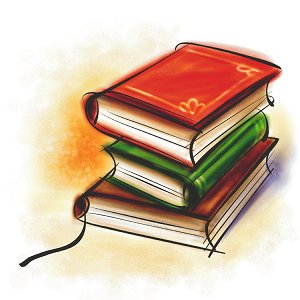
Salutations, my savvy sojourners of Dragonmount! Welcome to another weekly installment of "It Works in Theory", the new theory blog this gentleman has the giddy pleasure to write. I hope everyone's had fun so far in picking my brain apart; I know I've had plenty of fun (not as much sleep, however). I have enjoyed your comments so much, in fact, that I was inspired with what I think might be a great idea. Many of you who have left comments or have posted on our forums have very good theories of your own that often have my head nodding and my mind thinking of all the implications they would entail. So, I thought it would be serendipitous if some of you could send in some of your ideas, and I could pick one idea once a month (or perhaps several if they can fit) and elucidate on all the ins and outs on my blog. Just to clarify: I more than likely wouldn't pick one out that I disagree with just to pick it apart. It's more than likely I'll go with one I find to be interesting or provocative, and try to expound in other ways that the theory could be significant.
If this sounds like a good idea, or if you had any other suggestions or possible topics for my blog, you can either PM me here on Dragonmount or e-mail me at hazelkrs110@hotmail.com. If you think this is me being lazy and you don't feel like doing my work for me, feel free to pretend your computer monitor is my face and dash it, dash it good. Now, on to our weekly disclaimer:
WARNING!!! Spoiler Alert!!! WARNING!!!
This blog is based on theories that will include facts and material from the latest books in the series, so if you have not read through Towers of Midnight, continue reading at your own risk! "It Works in Theory" is not intended for human consumption. Should any hypothesis or presupposition come into contact with your skin or eyes, flush the affected area with a tepid saline solution for at least 10 minutes. Should a rash or itching persist, consult a physician or visit the forums.
I figured we'd go with something slightly different this week, both to give my fingers and my readers' eyes a rest. Instead of breaking down another one of my wacky, convoluted theories for umpteen paragraphs, I thought it might be nice to highlight an individual set of prophecies or viewings every now and again. We already have a great resource for general Wheel of Time questions in our Wheel of Time FAQ, and there you can find an explanation of what the prophecies might be referring to, so this is just another take on it. Today, we are going to examine the Dark Prophecies.
There's some uncertainty over one of the prophecies--the one introduced to us when Padan Fain escapes from the dungeons in Fal Dara, towards the end of The Great Hunt. It was written in blood on the walls of the dungeon, and we were lucky enough to have Verin record it down for us so that she could study it and give her thoughts on it. It was verified later to be a Myrddraal, possibly influenced by Ishamael, who actually wrote the prophecy on the wall. When asked about whether or not the Fal Dara prophecy was a true dark prophecy, Robert Jordan gave us a Read And Find Out response, leading us to believe that even if it's not true prophecy, there's still something we can gain from studying it.
The Great HuntChapter 7, "Blood Calls Blood"
Daughter of the Night, she walks again.
The ancient war, she yet fights.
Her new lover she seeks, who shall serve her and die, yet serve still.
Who shall stand against her coming?
The Shining Walls shall kneel.
The Daughter of Night is obviously Lanfear, and she walks again in the world after being released from the prison containing the Dark One. She fights his ancient war against the Light. I will say there might be subtle foreshadowing in the phrasing of "yet fights" relating to her capture and "death" in the land of the Aelfinn and Eelfinn, which she survives to fight yet again.
I talked about the next line last week in my blog when I spoke of the possibility of Lanfear gaining control of Rand through Callandor (here's the link in case you missed it). I think Rand is her new lover--new because he's not quite the same person she remembers from the Age of Legends--but others have brought up the possibility of her falling for someone else. I'm still not quite sure how Rand might serve her after dying, though, but I've got a theory (not to be revealed this week, however).
The last couple of lines are fairly important because part of them might be overlooked. "Who shall stand against her coming" could possibly be a reference to Moiraine, who stood up against Lanfear in The Fires of Heaven, but could also be foreshadowing of a future event. Then we come to "The Shining Walls shall kneel", which many take to mean that the White Tower (Shining Walls) will defer to someone else's authority, most likely Rand's. I contend that the line is both a metaphor and not one at the same time. "Shining Walls" refers to the White Tower, but when it says the "walls" shall "kneel", I take that to mean the shining walls and towers of the White Tower will fall.
We know the Seanchan are gearing up for a second attack on Tar Valon, and that the White Tower is lightly defended because so many forces are currently gathered at the Fields of Merrilor. There isn't any indication, however, that the Seanchan would want to hold the White Tower. They just want to capture as many marath'damane as possible, so it could very well come to pass that they simply demolish the Tower after they pillage it for whatever resources and treasures they can find.
Blood feeds blood.Blood calls blood.
Blood is, and blood was, and blood shall ever be.
This is the refrain from the prophecy we're currently reviewing, and I just wanted to address some things I felt were relevant. We have a good amount of references to the Dragon's blood having something to do with mankind's salvation, but nothing indicates why we might specifically need his blood for the Dark One to be defeated. I also have a theory on that (yes, I'm saving that one too), but I feel the last line of the refrain might be hinting at something. Blood is--Rand is the Dragon Reborn, and the Champion of the Light. Blood was--Lews Therin was the Dragon and helped seal the Dark One away for three millenia. Blood shall ever be--either the Dragon will always be reborn to fight the Dark One, or perhaps that Rand survives Tarmon Gai'don using his "blood"?
The man who channels stands alone.He gives his friends for sacrifice.
Two roads before him, one to death beyond dying, one to life eternal.
Which will he choose? Which will he choose?
What hand shelters? What hand slays?
The channeling man is Rand, and the second line is referring to the callus way in which Rand uses those around him to get what he thinks he needs. He puts Mat and Perrin, as well as countless others he meets, directly in harm's way with little hesitation. The next part is very interesting because it can be interpreted in two completely different ways. The first way is from the perspective of Darkfriends: one path leads him to "death beyond dying" because either he's balefired, the Dark One grabs his soul, or his soul is destroyed in Tel'aran'rhiod; the second path leads him to life eternal, for that is what is promised by the Dark One should he come to rule the land.
The alternate way of looking at it is that Rand can either end up destroying the Pattern, which leads to "death beyond dying", or he can take the other path and seal the Dark One away. The last line is also very significant because it is ominous foreshadowing to both the hand that he lost when he captured Semirhage and to Rand's internal conflict as he wonders which hand was destroyed, the one that shelters, or the one that slays.
Luc came to the Mountains of Dhoom.Isam waited in the high passes.
The hunt is now begun. The Shadow's hounds now course, and kill.
One did live, and one did die, but both are.
The Time of Change has come.
This whole stanza involves the origins of one of our most mysterious bad guys, Slayer. Perrin knows there is some relationship between Slayer and Lord Luc, who he met when he went to the defense of the Two Rivers in The Shadow Rising, because their smells are somewhat similar. One of the most interesting aspects of Slayer is the fact that both halves of his makeup have very interesting lineages that could have many possible outcomes in the last book: Lord Luc is Tigraine's brother, making him Rand's uncle; Isam is the son of Breyan, the woman known for having a large part in Malkier's betrayal, and through this line he is Lan Mandragoran's cousin. This is better than daytime soap operas, huh? The last bit we can glean from this particular passage is the reference to the Darkhounds' hunt, which Slayer is at least involved in, and more than likely leading. He's also been referenced as being given the task of hunting Padan Fain down, so he has plenty of possible confrontations in his future. The "time of change" simply refers to the last days before Tarmon Gai'don and the possibility of the Pattern being unraveled.
The Watchers wait on Toman Head.The seed of the Hammer burns the ancient tree.
Death shall sow, and summer burn, before the Great Lord comes.
Death shall reap, and bodies fail, before the Great Lord comes.
Again the seed slays ancient wrong, before the Great Lord comes.
Now the Great Lord comes.
The "Watchers" are clearly the "Watchers over the waves", who wait for the return of Artur Hawkwing's armies from across the ocean. The "seed of the Hammer" refers to Hawkwing's descendants, the Seanchan, where he was known as "The Hammer of the Light". The Seanchan burned the ancient tree when they defeated Tarabon because Tarabon's sigil is a tree, which is supposed to be a sapling of Avendesora, the Tree of Life. The middle two lines are pretty cryptic and hard to discern, but the next line is somewhat enticing to me. One way to look at the "seed" slaying ancient wrong is by correlating the Seanchan with the earlier mention of seed. The ancient wrong that they would slay could potentially be the practice of leashing channelers as damane, or possibly even slavery in general. Another way to look at it is switching Rand out with the Seanchan, and his ancient wrong could be the Dark One himself. I see this possibility and other obscure references as hints to Rand's possible re-altering of the Pattern itself, in which he replaces the cyclical expression of time in his universe with a linear expression of time. This is very iffy, but I'll probably explore that idea further some other day.
Next, we have the grade "A" approved Dark Prophecy, found at the end of Towers of Midnight. This prophecy is misinterpreted earlier in the same book by Graendal, when she attempts to set a trap for Perrin and his army.
Towers of Midnight"Epilogue"
Lo, it shall come upon the world that the prison of the Greatest One shall grow weak, like the limbs of those who crafted it. Once again, His glorious cloak shall smother the Pattern of all things, and the Great Lord shall stretch forth His hand to claim what is His. The rebellious nations shall be laid barren, their children caused to weep. There shall be none but Him, and those who have turned their eyes to His majesty.
The seals holding the Dark One's prison are weakening, and the "limbs" more than likely refer to the the ancestry of the male channelers who created his prison, and how the skill and ability to use the One Power is being culled out of humanity. Channelers today aren't able to complete anywhere near the same type of feats as they were able to in the Age of Legends. The rest of the excerpt goes on to elaborate on how awful and dark things will get as the Dark One's influence grows.
In that day, when the One-Eyed Fool travels the halls of mourning, and the First Among Vermin lifts his hand to bring freedom to Him who will Destroy, the last days of the Fallen Blacksmith's pride shall come. Yea, and the Broken Wolf, the one whom Death has known, shall fall and be consumed by the Midnight Towers. And his destruction shall bring fear and sorrow to the hearts of men, and shall shake their very will itself.
The one-eyed fool is Mat, and the halls of mourning could possibly be when he went into the realm of the Aelfinn and Eelfinn to rescue Moiraine. The Aelfinn and Eelfinn feed on emotion, and it seems the particularly delectable morsels are the emotions drawn from those suffering and in agony. It also seems pretty clear that many have died in its halls, which is another reference to mourning. Lastly, they describe themselves as "the warriors of final regret".
The "first among vermin" is most likely Rand because it's a good play on the wording of Lews Therin's title in the Age of Legends: First Among Servants. There's other ideas relating the first among vermin to either Fain, Perrin, Moridin, or possibly Slayer, but Rand is the best option because he's the one who will be most directly responsible for freeing the Dark One when he breaks the seals.
As for the "fallen blacksmith", that most definitely is Perrin, but the fallen part might be more ominous than we realize. There is a chance that Perrin might be one of the characters who don't survive the Last Battle. Don't start throwing things at me yet! The great thing is that even after he died, he could still have a hand in shaping things, especially concerning his abilities in Tel'aran'rhiod. Many would say, though, that the part concerning "the fallen blacksmith's pride" was fulfilled when he quit trying to deny the mantle of leadership, which is a reasonable enough conclusion.
One idea I thought of, though, could be the possibility that the pride here refers to his wolf friends. We've had an image ready to visualize for a long time of Perrin riding into battle with thousands of wolves running with him and burning through the hordes of Trollocs like a brush fire in west Texas. They're his pack, not a pride as we normally think of with lions, and his connection to the wolves is where he gets a big source of strength, individuality, force of will, and pride. So, the line could refer to Perrin leading a very large number of wolves to their death, which would be heartbreaking because it would be the second time Perrin will have been responsible for that many wolf deaths (the first being Dumai's Wells). Wow, I really like theorizing about deaths of characters and races, don't I?
The way you interpret the last part of the passage depends on your idea of what "broken wolf" means. Some might think this would be Perrin, or a bunch of other alternatives that make less and less sense, but there's a much stronger case for Rand. There are a couple of comparisons made between Rand and wolves in the books, and he even has his own wolf-name, Shadowkiller. The point is that Perrin isn't the only one in the series who could be connected with wolves somehow. A much more thorough and elaborate argument is made by Terez in the Wheel of Time FAQ; she pretty much lays it all out very well.
Still, after all that, there is one line which is usually interpreted one way but could easily mean something else.
His destruction shall bring fear and sorrow to the hearts of men, and shall shake their very will itself.
"His destruction" is generally considered to be his death, but it is very possible it could be referring to the destruction he will cause. There's still only one person who truly could be said to cause enough destruction that it could shake the very will of men. That's right, you guessed it, Dark Rand 2.0 came back to rear his giant, ugly, prophetic head. I actually meant to make this connection last week, but forgot in my sleep deprived, zombie-like state of mind. Imagine Rand going to the Midnight Towers to be used like a puppet, wreaking a wild, destructive force across the countryside, balefiring friend and foe alike. Yeah, that would shake the will of men alright.
And then, shall the Lord of the Evening come. And He shall take our eyes, for our souls shall bow before Him, and He shall take our skin, for our flesh shall serve Him, and He shall take our lips, for only Him will we praise. And the Lord of the Evening shall face the Broken Champion, and shall spill his blood and bring us the Darkness so beautiful. Let the screams begin, O followers of the Shadow. Beg for your destruction!
The Lord of the Evening more than likely refers to Moridin, in that as Rand is known as the Lord of the Morning, Moridin as his arch nemesis would be the opposite. Being that the Lord of Morning will face the Broken Champion, it stands to reason that Rand would be the Broken Champion for a few reasons. No one else could really face Moridin and have a chance, unless they had some kind of sa'angreal or something, which would probably be referenced in the prophecy. Rand is the Light's Champion, and he refers to himself as being broken several times in the books.
Then we come to the last part of the prophecy, another reference to the spilling of Rand's blood possibly being a necessary catalyst for the freeing of the Dark One/defeat of the Dark One. I definitely want to contemplate this "Blood" issue hopefully in the weeks to come, so I might need a little more time for dramatic build up and eager anticipation to occur. You might or might not be seeing a blog from me next week, as the site will be busy handling the Dragonmount duties at Dragon*Con this coming weekend (plus it's my birthday next Monday), so it might be a good idea to emotionally, mentally, and physically prepare for a possible week of no theory blog. I'm sure you'll manage!












Recommended Comments
Join the conversation
You can post now and register later. If you have an account, sign in now to post with your account.
Note: Your post will require moderator approval before it will be visible.